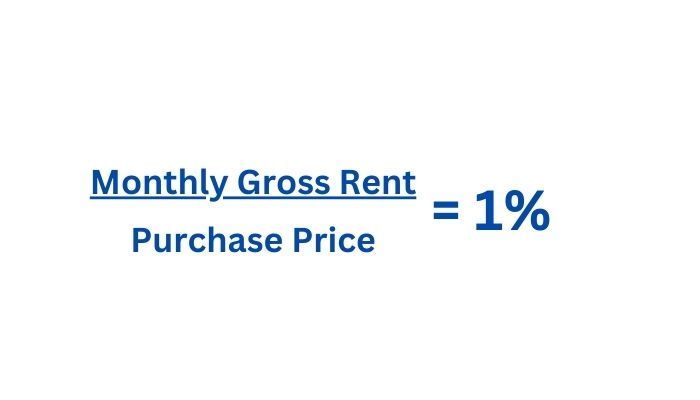


Buying real estate is complicated – yes, even turnkey real estate.
That’s because there are literally hundreds of variables to consider in your decision, including your personal financial standing, your existing portfolio, the nature of the deal on the table, and even broader economic conditions.
Wouldn't it be nice if there was a simple test that could tell you whether a rental property was worth buying?
Well, there is. Kind of.
Welcome to the helpful, yet admittedly somewhat limited world of the 1 percent rule.
In real estate, the 1 percent rule is an informal “rule of thumb” to help investors figure out which properties are worth buying.
Essentially, you’re trying to determine whether the gross monthly rent generated by a property will meet or exceed 1 percent of the total purchase price. Generally, you'll also need to factor in the costs of initial repairs, but you won't need to do this for turnkey real estate properties, as you can start renting them out immediately.

For example, let's say you're considering purchasing a property for $250,000. For this property to pass the 1 percent rule test, it must generate at least $2,500 in gross monthly rent. If it can only sustain $2,000 in gross monthly rent, it's not worth considering. If it can sustain $3,000 in gross monthly rent, it's definitely worth considering.
Let's see how this plays out.
Assume that this property is in an average Ohio city at the time of this article’s writing. If you make a $50,000 down payment on this property, taking out a $200,000 mortgage at a fixed interest rate of 7.5 percent over 30 years, your mortgage payment (including property taxes and home insurance) should come out to $1,700-$1,800. A gross monthly rent of $2,500 is more than enough to cover that, plus occasional maintenance expenses, while still leaving some room for monthly positive cash flow. Rent of $2,000 would make things a bit tight, while rent of $3,000 would be quite profitable.
Obviously, this is meant to be a high-level and noncommittal test, as there are many variables you'll need to consider as you evaluate a piece of real estate. This rule doesn't take into consideration things like property taxes, home insurance, maintenance costs, or even future appreciation; it's meant to simplify things so you can easily weed out properties that aren't worth considering at all.
That said, this is an excellent place to start when shopping for turnkey real estate properties to add to your portfolio.
Rental property investors often seek properties capable of generating positive monthly cash flow, or recurring monthly profits, for obvious reasons. But in many cases, there's nothing wrong with simply breaking even on your real estate investments.
Consider:
Turnkey properties are a bit unique in the context of the 1 percent rule, and for a few reasons.
The first and most notable is that you won't have any initial repairs to factor into your equation. Instead, you can run this calculation using only the purchase price.
Second, turnkey real estate properties tend to be recently renovated and highly desirable, possibly allowing you to charge slightly above market rent – and fill those properties faster.
Third, and less beneficially, turnkey real estate properties are sometimes more expensive than their counterparts. This partially erodes some of the other advantages, but it should balance out in your favor.
Applying the 1 percent rule is a great place to start in your real estate analysis, but you'll need to make some adjustments if you want to act in your own financial best interest.
Consider the following:
If you want to use the 1 percent rule appropriately and effectively when buying turnkey properties, follow these strategies:
Do you need help finding strong properties to add to your portfolio? Or are you on the fence about whether or not to keep adding to your real estate holdings?
You’re one free call away from answers. Contact us today for a free consultation!

Nate Nead is the Founder and Principal of HOLD.co, where he leads the firm’s efforts in acquiring, building, and scaling disciplined, systematized businesses. With a background in investment banking, M&A advisory, and entrepreneurship, Nate brings a unique combination of financial expertise and operational leadership to HOLD.co’s portfolio companies. Over his career, Nate has been directly involved in dozens of acquisitions, spanning technology, media, software, and service-based businesses. His passion lies in creating human-led, machine-operated companies—leveraging AI, automation, and structured systems to achieve scalable growth with minimal overhead. Prior to founding HOLD.co, Nate served as Managing Director at InvestmentBank.com, where he advised middle-market clients on M&A transactions across multiple industries. He is also the owner of several digital marketing and technology businesses, including SEO.co, Marketer.co, LLM.co and DEV.co. Nate holds his BS in Business Management from Brigham Young University and his MBA from the University of Washington and is based in Bentonville, Arkansas.